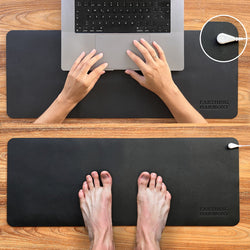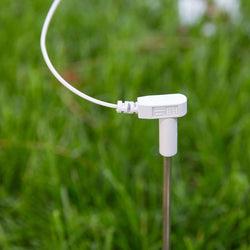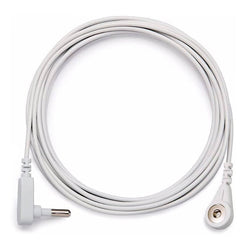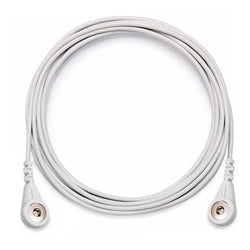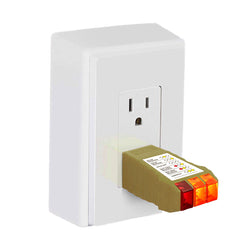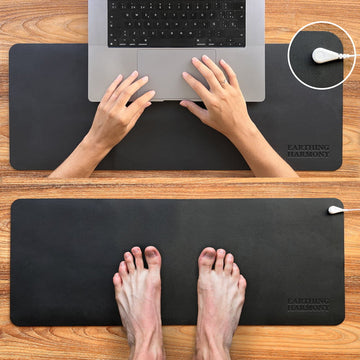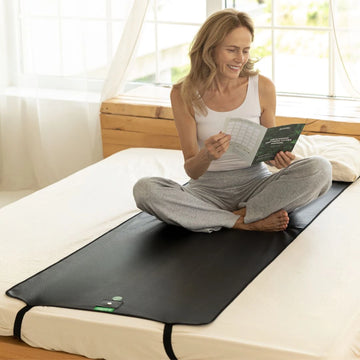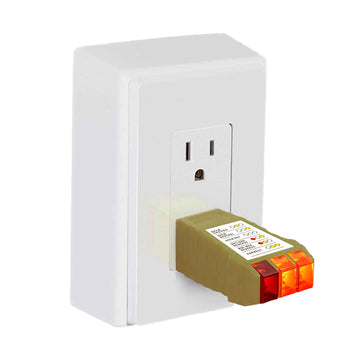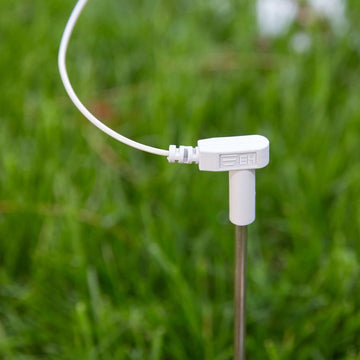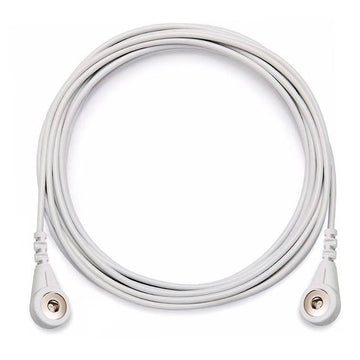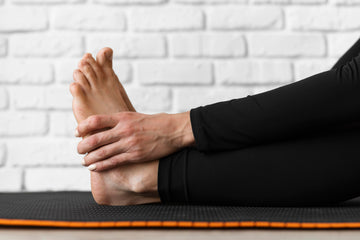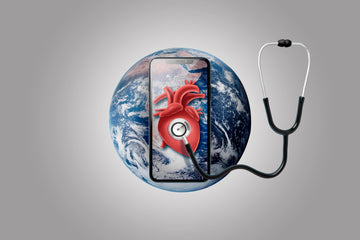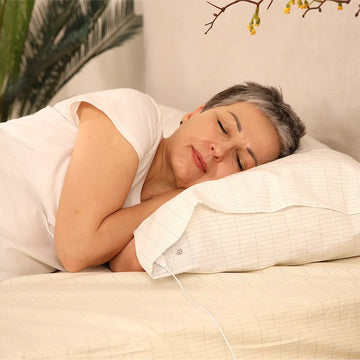A Forgotten Connection to the Earth
In today’s modern world, we’ve mastered digital connection — yet remain deeply disconnected from one of the most vital sources of wellness: the Earth itself. We live in insulated homes, wear rubber-soled shoes, and spend hours on devices, all while severed from the very surface that supports and sustains us.

Grounding, or earthing, is the science-backed act of reconnecting the human body with the Earth’s natural energy by restoring the flow of electrons into our biological system. While this might sound esoteric, modern inflammation research and biophysics show it’s anything but. This simple practice — whether walking barefoot outdoors or sleeping on a grounding sheet — holds the potential to transform how we sleep, heal, and thrive.
In this comprehensive guide, we’ll uncover the mechanisms behind grounding, explore effective grounding techniques, and explain how reconnecting to the Earth’s surface electrons can improve everything from pain relief to immune response and blood flow.
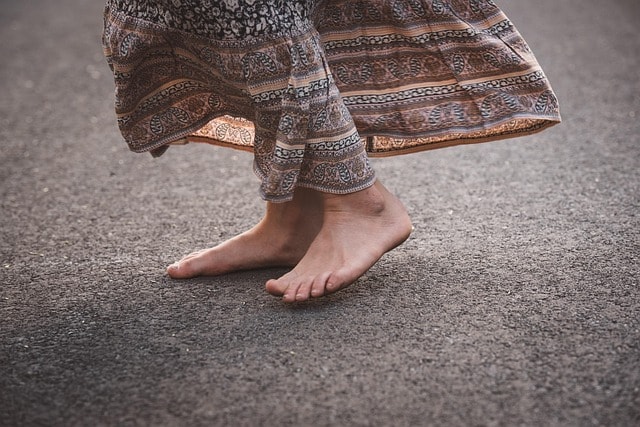
What Is Grounding? Understanding the Basics
Grounding (or earthing) is the act of physically connecting your body to the Earth’s surface — typically through bare skin contact with soil, sand, grass, or even conductive materials that transmit Earth's energy indoors.
Why does this matter? The Earth is teeming with negatively charged electrons, which may act as antioxidants in the human body. When we make direct contact, these electrons can neutralize harmful free radicals, reducing oxidative stress and inflammation. It’s a simple but profound way to restore electrical balance in the human body.
Whether you walk barefoot in the grass, swim in the ocean, or use a grounding mat or grounding rod at home, the underlying principle remains the same — contact with the Earth helps regulate and restore bodily functions.

The Science of Grounding: How Earth’s Electrons Influence Health
So how does grounding work from a scientific standpoint?
The key lies in the body’s natural bioelectrical state. When we're disconnected from the Earth, our body can accumulate positive charge and inflammation. Direct contact with the Earth provides a steady flow of electrons, helping neutralize this charge. These electrons support various biological systems, notably through improvements in:
-
Blood viscosity (how thick your blood is)
-
Heart rate variability
-
Immune response
-
Pain signaling
Grounding also influences circadian biology. Studies show that contact with Earth’s surface can modulate cortisol rhythms — key to better stress regulation and deeper sleep cycles. Sleeping grounded, particularly on grounding sheets or a grounding pillowcase, allows the body to heal while resting.

Grounding and Inflammation: Natural Relief Backed by Research
Chronic inflammation is behind nearly every modern illness, from cardiovascular disease to autoimmune conditions. One of the most compelling aspects of grounding is its impact on inflammatory markers.
A study published in the Journal of Inflammation Research found that grounding significantly reduced white blood cell migration to injured areas, supporting quicker wound healing and pain relief. In another trial, participants using grounding patches on injury sites saw reduced redness, swelling, and immune overactivation — clear signs of immune response modulation.
These findings suggest grounding could offer a natural intervention for managing chronic inflammatory conditions, a subject gaining traction in both alternative medicine and environmental and public health.

Blood Flow Before and After Grounding
One of the most observable effects of grounding is on blood flow. Poor circulation is a major factor in fatigue, muscle pain, and even stroke risk. Research shows that grounding significantly reduces blood viscosity, enhancing circulation and oxygen delivery throughout the body.
Participants in these studies reported sensations like warmth, tingling, and improved mobility — all signs that better blood flow and microcirculation were taking place.
Whether you use a grounding mat at your desk or sleep connected to a universal grounding mat, the circulatory benefits can have far-reaching health implications.
 Grounding and the Immune System: Recharging the Body’s Defenses
Grounding and the Immune System: Recharging the Body’s Defenses
The immune system is deeply intertwined with inflammation, sleep, and emotional regulation — and grounding addresses all three.
By lowering cortisol levels and oxidative stress, grounding supports more efficient immune function. Some researchers suggest that electrons from the Earth reduce overactive immune responses while still promoting healthy defense mechanisms. This balanced activity can be especially useful for people with autoimmune conditions or chronic fatigue.
Additionally, the improved blood flow from grounding ensures that immune cells are effectively transported where they are needed most.

Grounding Techniques: Ways to Reconnect
There are many grounding techniques that range from simple outdoor habits to modern indoor tools.
1. Walking Barefoot Outside
The most intuitive method is to walk barefoot on natural conductive surfaces like grass, sand, soil, or unsealed concrete. Aim for 20–30 minutes daily to feel grounded and absorb Earth’s electrons directly.
2. Using Grounding Mats, Rods, and Accessories
Indoor grounding mats replicate this effect by connecting to a grounded outlet or via a grounding rod. These mats can be placed under your feet while working or sleeping.
You can check the effectiveness of your connection with an outlet checker. This is crucial for ensuring safety in indoor grounding techniques.
3. Gardening With Bare Hands
Touching soil while gardening is another powerful technique that merges grounding with nature therapy. Digging, planting, or even sitting with your hands in the earth is an act of mindfulness and electrical restoration.
4. Indoor Grounding With Sheets and Accessories
For those in colder climates or apartments, indoor grounding is a game-changer. Grounding sheets, pillowcases, and accessories like those in our accessories collection offer continuous contact while you sleep or work.

The “5 Things” Grounding Technique for Mental Health
Not all grounding is physical. The “5 things grounding technique” is a popular mental method for calming anxiety and bringing yourself back to the present moment — also known as the here and now.
-
See: 5 things around you
-
Touch: 4 textures you can feel
-
Hear: 3 distinct sounds
-
Smell: 2 scents in the air
-
Taste: 1 taste in your mouth
Used in trauma therapy and mindfulness practices, this sensory ritual is incredibly grounding emotionally, especially when combined with physical tools like grounding mats or patches.

How Long Should You Ground Each Day?
Studies suggest that as little as 20 minutes per day can significantly impact sleep quality, inflammation, and emotional balance. However, many users find that longer exposure — especially during sleep — leads to even deeper benefits.
Sleeping on a grounding sheet or pillowcase ensures prolonged contact, especially during the body’s natural healing cycle at night. For best results, combine overnight grounding with daytime practices like barefoot walking or seated use of a mat.

The Three Types of Grounding
Grounding practices fall into three main categories:
1. Physical Grounding
Involves direct contact with nature — think beach walks, hiking barefoot, or lying on the grass. These are the most traditional grounding methods and provide a full-body charge.
2. Indoor Grounding
With tools like mats, sheets, rods, and footwear, you can stay grounded inside. These products are vital for those without regular access to natural environments.
3. Emotional or Mental Grounding
Practices like breathwork, sensory mindfulness, or visualization help bring your awareness to the here and now. This supports emotional regulation and stress relief.

Grounding and Pain Relief: Easing the Body Naturally
Pain is one of the most common complaints driving people to try grounding. The results are often dramatic.
Whether it’s muscle soreness, arthritis, or injury recovery, grounding appears to reduce perceived pain by addressing the root causes — inflammation, oxidative stress, and poor circulation.
Grounding mats are particularly useful for targeting local areas. One woman recovering from knee surgery reported that her incision healed faster with less bruising and pain by ensuring she was grounded most of the time during healing.

Grounding for Better Sleep: Your Natural Sleep Aid
Grounding for better sleep is one of the most studied benefits of this practice. It helps regulate circadian rhythms, lower cortisol, and activate parasympathetic nervous system responses — all crucial for falling and staying asleep.
Using a grounding sheet or pillowcase enables full-body contact while you sleep, allowing deep, uninterrupted exposure to healing Earth energy.
Grounding and Anxiety: Finding the Calm Within
In today’s hyperstimulated world, anxiety is rampant. Grounding helps regulate the nervous system, activating calming pathways in the brain.
People who practice grounding techniques regularly — whether through physical contact or mental techniques like the “5 things method” — report improved clarity, emotional regulation, and feelings of safety. Physiologically, grounding reduces heart rate and promotes relaxation, countering fight-or-flight responses.
Safety Considerations for Grounding
While grounding is generally safe, especially outdoors, it’s important to take precautions with indoor tools.
-
Use an outlet ground checker to ensure your grounding port is functional.
-
Do not ground during thunderstorms or near high-voltage appliances.
-
Consult your doctor before using grounding products if you have electronic implants, pacemakers, or specific medical conditions.
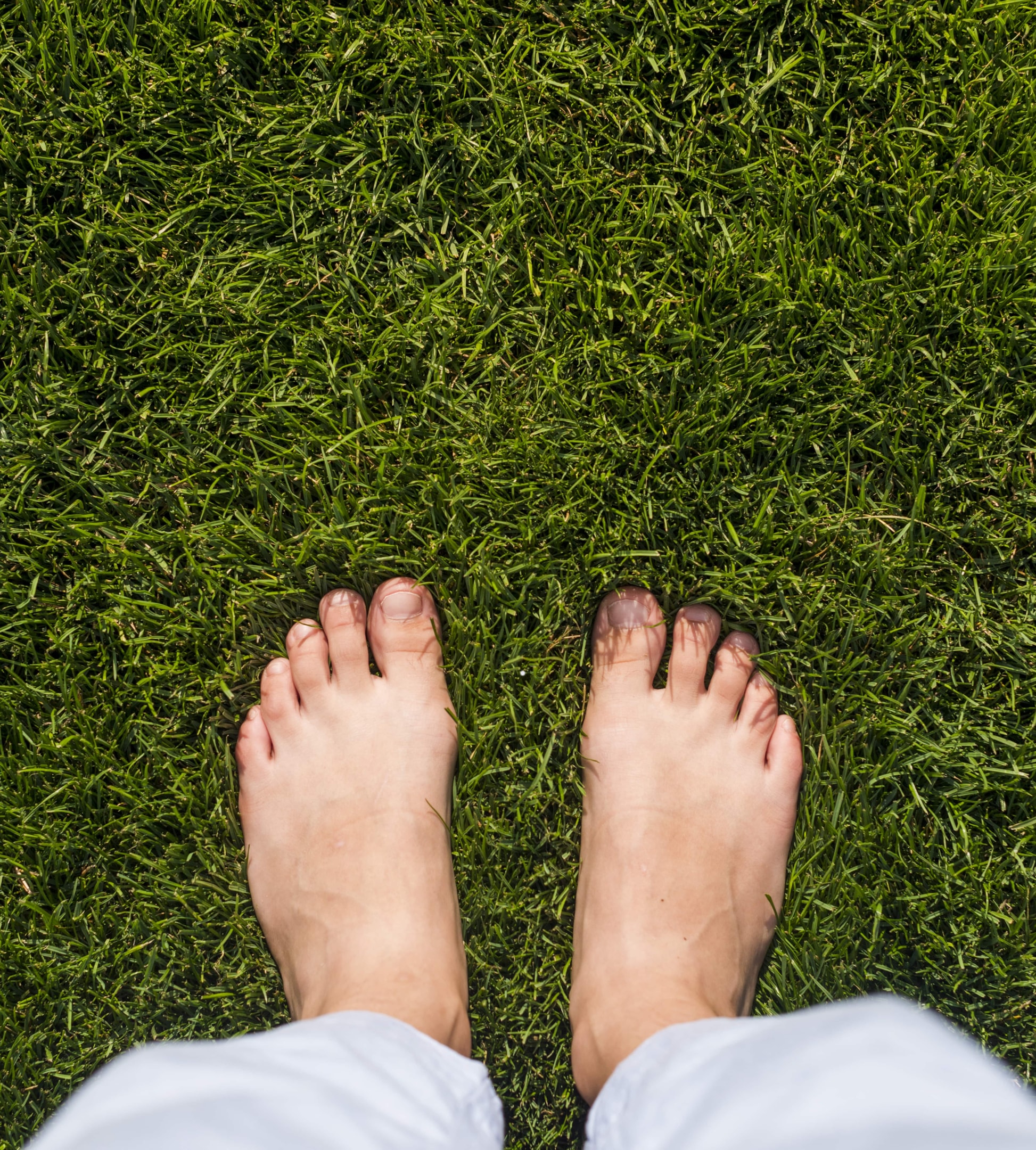
The Role of Skin in Grounding
Your skin is the bridge between you and Earth. It’s an exceptional conductor, especially when moist or in contact with conductive materials.
Products like grounding footwear or patches use skin contact points to deliver electrons directly into the body’s electrical system. Maintaining healthy, hydrated skin can even improve the effectiveness of grounding.
Grounding Testimonials: Real Stories, Real Results
People from all walks of life have experienced the transformative effects of grounding. Athletes report faster recovery. Parents say their children sleep better. Those with chronic illness find renewed energy and pain relief.
One user shared: “After using a grounding mat under my desk and a sheet at night, my inflammation levels dropped so much that my doctor lowered my medication dosage.”
Health Implications of Grounding on a Global Scale
Grounding has implications not just for individual health but for environmental and public health. It is:
-
Sustainable: No packaging waste when walking barefoot or using long-lasting tools.
-
Accessible: Minimal cost for maximum benefit.
-
Preventative: May reduce healthcare costs by managing pain, anxiety, and inflammation naturally.
This low-cost, high-impact practice could play a pivotal role in wellness interventions worldwide.
The Earth Is Always There — Are You Connected?
Grounding isn’t just a wellness trend. It’s a return to our biological roots — a healing cord reconnection to the Earth that modern life has severed.
Whether you take off your shoes, sleep on a grounding sheet, or explore our full grounding collection, the path to better health is right beneath your feet.
The Earth is always there — waiting to recharge, rebalance, and reconnect you.
Frequently Asked Questions About Grounding
1) What is grounding and how does it affect the human body?
Grounding, also known as earthing, is the practice of making direct physical contact with the Earth’s surface — usually through bare feet, hands, or the use of grounding tools like a grounding mat or metal rod. This contact allows free electrons to flow into the body, which can serve as natural antioxidants that reduce oxidative stress and support the immune system. Scientific experiments show that electrons act to stabilize the body’s electrical environment, lowering inflammation, balancing cortisol, and improving heart rate variability.
2) How do grounding techniques improve public health?
Grounding offers profound health benefits that extend beyond individuals to affect public health and even environmental and public health. In a world dominated by an urban lifestyle, disconnection from the Earth is now the norm. Reintroducing grounding practices — such as walking barefoot, gardening, or using grounding mats — may reduce chronic illness burden, stress, and pain, all while promoting better sleep, mental clarity, and focus. Grounding is a low-cost, scalable wellness intervention with significant implications for long-term healthcare sustainability.
3) What are the different grounding techniques I can try?
There are several effective grounding techniques, both indoor and outdoor, including:
-
Walking barefoot on grass, soil, or sand
-
Using a grounding mat connected to an electric outlet or conductive plug
-
Connecting to Earth via a metal rod with a wire leading outside
-
Sleeping on grounding products like sheets or pillowcases connected with a wire to an earth.
-
Practicing mindfulness using the “Five Senses” grounding technique: see, touch, hear, smell, and taste
Each method helps you reconnect with the Earth's surface, bringing your awareness to the here and now while restoring your body’s natural rhythms and senses.
4) Can grounding speed wound healing?
Yes, evidence suggests that grounding can speed wound healing by enhancing circulation and reducing localized inflammation. In one example, subjective reporting showed that individuals who used grounding patches experienced faster recovery from surgical incisions and fewer complications. The biologic effects of free electrons include improved tissue oxygenation and reduced swelling — both crucial for wound healing.
5) How does grounding affect autoimmune diseases and chronic inflammation?
Grounding appears to calm the immune system, which is often hyperactive in autoimmune diseases. By reducing pro-inflammatory cytokines and increasing oxygen delivery, grounding helps modulate chronic inflammatory symptoms. Studies have also noted that free electrons help regulate immune overreaction, making grounding a potential complementary therapy for managing systemic inflammation.
6) What role do grounding mats and indoor tools play?
A grounding mat is a conductive surface that connects to Earth via a conductive plug, metal rod, or electric outlet. It replicates the experience of bare feet on soil and is ideal for the urban lifestyle environments where outdoor grounding isn't practical. Mats can be used at workstations, in bed, or during yoga, offering continuous access to Earth’s free electrons even indoors. To ensure safety, always verify outlet grounding with an outlet checker.
7) Is grounding safe? How do I know if my outlet is grounded?
Grounding is generally safe for most humans, but when using indoor tools like mats or sheets, it's essential to test the electrical outlet using an outlet checker. This small device ensures your cord and plug are correctly connected to a grounded port. If using a metal rod outdoors, ensure it's inserted into moist soil and connected via a wire. Those with medical implants should consult their doctor before starting.
8) How long should I ground each day to see benefits?
Studies suggest grounding for just 20–40 minutes daily can begin to yield noticeable benefits like reduced stress, better focus, improved sleep, and decreased pain level. Longer sessions — particularly during sleep using grounded sheets — may offer even more profound health improvements and reduce undesirable symptoms over time.
9) Does grounding help with anxiety and emotional regulation?
Yes. Grounding techniques, especially those that stimulate the senses — like the "5-4-3-2-1" method — help anchor you in the here and now, easing anxious thoughts and restoring emotional balance. This is especially helpful during episodes of overwhelm or panic. Grounding calms the nervous system and may even shift the brain into a more relaxed alpha state.
10) Can I ground through food or water?
While contact with the Earth is the most direct form of grounding, natural elements like spring water and unprocessed food can support overall wellness in complementary ways. However, grounding through feet, hands, or grounding tools provides the clearest conduit for electrons to flow into the body and influence biological functions directly.
11) Is subjective reporting on grounding reliable?
While subjective reporting can’t replace double-blind trials, it provides meaningful context, especially when consistent across thousands of users. Many people report feeling lighter, more energized, or noticing improved sleep and reduced symptoms and pain after grounding. These anecdotal patterns often correlate with measurable biologic effects, adding a valuable human dimension to the science.
12) What’s the difference between grounding during the day vs. at night?
Daytime grounding — especially via walking barefoot outdoors — supports alertness, muscle recovery, and stress reduction. Nighttime grounding, such as sleeping on a grounded bed sheet, helps align cortisol cycles, improve sleep, and trigger regenerative healing while the body is in rest mode. Ideally, combine both for maximum health benefits.
13) Can grounding help with light sensitivity or EMF exposure?
Some individuals report that grounding helps them feel more resilient to modern environmental stressors, including screen-related light fatigue and electromagnetic fields. Grounding may help rebalance internal electrical charge, which is often disrupted by long-term EMF exposure in our modern lifestyle. While this area still requires more research, user feedback remains promising.
14) Do I need to be outdoors to experience the effects of grounding?
No, you can experience grounding indoors through mats, sheets, pillowcases, or patches connected via a cord to an electrical outlet or metal rod. Just ensure your setup is properly grounded using an outlet checker. Indoor grounding is a convenient option for people in urban apartments, cold climates, or during nighttime.
15) Can grounding improve cognitive clarity and focus?
Yes. Grounding promotes a parasympathetic state in the nervous system — the "rest and digest" mode — which can reduce anxiety and mental clutter. Many users report increased mental focus, clarity, and even a more positive outlook after consistent grounding sessions. This could be due to improved blood flow and reduced systemic stress levels.
16) How can I know if grounding is working for me?
Pay attention to how you feel after grounding — many people notice more restful sleep, lower pain levels, calmer emotions, or enhanced senses like smell and touch. These shifts, while subtle, are important details that signal your body is beginning to rebalance. Keep a journal to track changes and monitor both subjective reporting and physical outcomes over time.
If you’re interested in beginning your own grounding journey, start by exploring grounding sheets and mats, or learn more from our guide on where to buy grounding sheets. The Earth is always beneath you — it’s time to reconnect.






 Shoes
Shoes
 Boots
Boots
 Sandals
Sandals
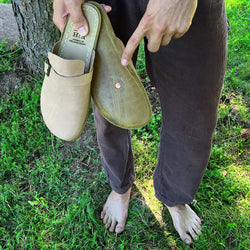
 Shoes
Shoes
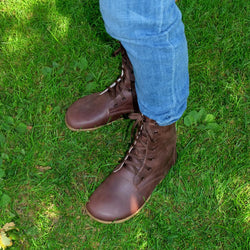 Boots
Boots
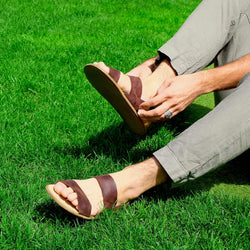 Sandals
Sandals


